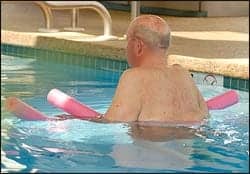by David Douglas
Last Updated: 2008-01-01 7:30:22 -0400 (Reuters Health)
NEW YORK (Reuters Health) – In patients with primary generalized dystonia, the efficacy of pallidal deep brain stimulation is significantly influenced by the implanted electrode contact location.
As lead investigator Dr. Stephen Tisch told Reuters Health, "the main important finding is that posteroventral globus pallidus internus (GPi) stimulation is more efficient in controlling dystonia."
To determine the effect of electrode location, Dr. Tisch of University College London and colleagues studied 15 patients who underwent bilateral GPi deep brain stimulation. They were assessed before and 6 months after implantation using the Burke-Fahn-Marsden dystonia scale. There was a highly significant mean improvement of 69.5%.
However, electrode placement influenced the outcome, the team reports in the December issue of the Journal of Neurology, Neurosurgery, and Psychiatry.
The position of electrode contacts was determined from the postoperative stereotactic MRI, and cluster analysis of the stimulated contact coordinates identified two groups, distributed along an anterodorsal to posteroventral axis.
For the arm, improvement was greater for posteroventral than anterodorsal stimulation (86% versus 52%). This was also true of the trunk (96% versus 65%).
For the leg, posteroventral and anterodorsal stimulation were of equivalent efficacy. Overall clinical improvement was maximal with posteroventral stimulation (89% versus 67%).
"This result," concluded Dr. Tisch, "is of clinical use to surgeons for guiding optimal electrode placement and for choosing electrode contacts used for chronic therapeutic stimulation for dystonia."
J Neurol Neurosurg Psychiatry 2007;78:1314-1319.
Copyright Reuters 2008.




